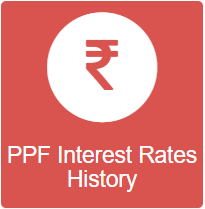What is Pradhan Mantri Mudra Loan? | Mudra Loan Scheme
As we know that availing a loan or finance is very necessary for any business for the purpose of its growth and due to this reason businesses approach a bank or financial institution to obtain required funds. It has also been a fact that banks or other lenders are not very interested in extending loans to micro and small businesses, particularly in rural areas as they can't provide sufficient amount of collateral security for the purpose of safety which works as a hurdle for such borrowers. Government of India has introduced Pradhan Mantri Mudra Yojana to remove such types of hurdles making loans available for micro and small businesses that too on a lower interest rate.
About Pradhan Mantri Mudra Loan Scheme
Government of India has launched Pradhan Mantri Mudra Yojana (PMMY) on 8th April 2015 with a concept of 'funding the unfunded' micro enterprises in the country. It is government's finance scheme to provide business loan to new or existing micro or small scales businesses from rural areas in India. Under this scheme, loans upto Rs.10 lakh are extended to income generating micro enterprises engaged in non-farm enterprises in manufacturing, trading and service sector.
Now allied agriculture activities like dairy, poultry, beekeeping, goatery, piggery, fishery, agri-clinics and agri-business centres, food & agro processing, etc. have also been included under PMMY scheme w.e.f. 01.04.2016. MUDRA loan is not for consumption/ personal needs.
Availability of Mudra Loan
Mudra loan under Pradhan Mantri Mudra Yojana (PMMY) is available at almost all bank branches across India. Mudra loan is also issued by NBFCs / MFIs who are engaged in financing for micro enterprises in small business activities.
MUDRA loans are extended by banks, NBFCs, MFIs and other eligible financial intermediaries as notified by MUDRA Ltd. In the beginning, based on eligibility criteria, MUDRA has enrolled 27 Public Sector Banks, 17 Private Sector Banks, 27 Regional Rural Banks and 25 Micro Finance Institutions (MFIs) as partner institutions for channelizing assistance to the ultimate borrower.
Presently, after the State Bank of India merged with five of its associate banks (State Bank of Bikaner & Jaipur, State Bank of Hyderabad, State Bank of Mysore, State Bank of Patiala and State Bank of Travancore), and with the Bharatiya Mahila Bank on 1st April, 2017, Mudra Loan has been provided by 21 Public Sector Banks, 18 Private Sector Banks, 31 Regional Rural Banks, 14 Co-operative Banks, 31 NBFCs and 47 Micro Finance Institutions (MFIs)
Meaning of MUDRA
MUDRA means MICRO UNITS DEVELOPMENT AND REFINANCE AGENCY. Mudra is a financial institution being set up by Government of India for development and refinancing micro units enterprises. It has been set up as a subsidiary of SIDBI
As MUDRA is a refinancing institution, loans are not offered directly by MUDRA. Mudra Loans are offered through existing Banks, NBFCs, Financial Institutions, Primary Lending Institutions, etc. MUDRA's refinance scheme carries a maximum tenor of 36 months which will also be aligned to terms of allotment of MUDRA funds by RBI from time to time.
Scheduled Commercial Banks, RRBs and Cooperative Banks wishing to avail of refinance from MUDRA will have to peg their interest rates, as advised by MUDRA Ltd., from time to time.
What is Mudra Bank?
Mudra Bank is being set up through a statutory enactment and will be responsible for developing and refinancing through a Pradhan Mantri MUDRA Yojana. It provides loans at low rates to micro-finance institutions and non-banking financial institutions which then provide credit to Micro and Small Businesses.
Founded on 8 April 2015, the Bank has been set up with a corpus of Rs 20,000 crore and a credit guarantee fund of Rs 3,000 crore.
Features of Mudra Loan Scheme
There are many Features of Mudra Loan Scheme which are as follows:
- It is a scheme specially designed by Govt. of India to extend credit facility to the non-corporate, non-farm small/ micro enterprises in India whether new or existing.
- Pradhan Mantri Mudra Yojana (PMMY) has been launched on 8th April 2015.
- Majority of Commercial Banks, Regional Rural Banks (RRBs), Small Finance Banks, Cooperative Banks, Micro Finance Institutions (MFIs) and Non-Banking Finance Companies (NBFCs) provide Mudra Loan.
- It is available only to Indian Citizens. Any individual including women, proprietary concern, partnership firm, private limited company or any other entity are eligible applicant under PMMY loans.
- To avail a loan under this scheme, the applicant's business is categorised in one of the 3 categories i.e. Shishu, Kishore and Tarun.
- Mudra loan is available from Rs.50,000 to Rs.10,00,000.
- The applicant must have a good credit history to obtain loan under this scheme.
- You can select the lender as per your own choice.
- You can apply for loan either online i.e. through web portal or offline i.e. by visiting the lender.
Classification of Mudra Loans
Classification of Mudra Loan into 3 categories i.e. Shishu, Kishore & Tarun:
- Shishu: Loans up to Rs.50,000 provided to only startup businesses
- Kishore: Loans above Rs.50,000 and up to Rs.5 lakh provided to only those businesses that have already started up but need financial aid for establishing
- Tarun: Loans above 5 lakh and up to Rs.10 lakh provided to only those business that are already established but require funds for expansion
Further, overdraft amount upto Rs.5,000 sanctioned under PMJDY accounts are also classified as MUDRA loans under PMMY.
Advantages of Mudra Loan Scheme
There are many advantages and disadvantages of Mudra Yojana. The main advantages of Mudra Yojana are as mentioned below:
- Now non-corporate and non-farm small/ micro enterprises in India, whether new or existing, can easily avail the loan under this scheme.
- Banks will not insist for any collateral security for Mudra Loan.
- The processing fee to get this loan is NIL.
- The interest rate charged under Mudra Loan is comparatively low than that of other loans.
- National Toll free (24X7) helpline numbers are available to help people in case of any query.
- Mudra Card is given to the borrowers of Mudra Loan.
- Life insurance of the applicant is not required for loans for availing Mudra Loan.
Disadvantages of Mudra Loan Scheme
There are many advantages and disadvantages of Mudra Yojana. The primary disadvantages of Mudra Scheme are as mentioned below:
- There is a cap of Rs. 10 lakh under Mudra Loan.
- The applicant needs to have a good Credit History in order to avail Mudra Loan.
- The applicant is required to open a current account in the bank where he is applying for Mudra Loan.
- It is available only to Indian Citizen.
- Applicant should not be a defaulter in any Bank/Financial institution
- It is not available to large scale enterprises.
- Mudra bank seems to promote shadow banking which is discouraged globally.
- MUDRA loan is not for consumption/ personal needs.
Security for Mudra Loan
Primary Security: (1) Assets created out of the Bank's finance.(2) Personal guarantee of promoters/directors.
Collateral Security: No collateral security.
All eligible activity would be covered under the guarantee cover of NCGTC under 'Credit Guarantee Fund for Micro Units'. (No collateral security/third party guarantee to be obtained).
Rate of Interest (ROI) on Mudra Loan
Lenders charge very nominal interest rate on Mudra Loan. Interest rate is prescribed by the lender/ bank from time to time, which is usually linked to MCLR. The lender can decide the interest rate for the loan. Mudra or the RBI or the Government of India does not have any control the interest rate decided by the lender.
Tenure of Mudra Loan
The maximum loan tenure for Mudra Loan under Shishu category is 5 years, however, the loan tenure for Kishore and Tarun can be decided by the lender/ bank on case to case basis depending upon nature of business, business cash flow and credit worthiness of the applicant.
What is Mudra Card?
For the purpose of working capital limit, MUDRA has launched a new product called "MUDRA Card", which is a Debit card issued on RuPay platform, and provides hassle free credit in a flexible manner.
As per the guidelines of Micro Units Development and Refinance Agency Ltd (MUDRA) MUDRA Card is formulated to meet the working capital needs of the micro enterprises.
Mudra Card is an innovative credit product wherein the borrower can avail of credit in a hassle free and flexible manner. It is provided to those borrowers of Mudra Loan who have opted for Cash Credit or Overdraft loan facility. The borrower, who has applied for term loan, will not get this card.
It will provide a facility of working capital arrangement in the form of Cash Credit/ Over Draft to the borrower. Since MUDRA Card will be RuPay debit card, it can be used for drawing cash from ATM or make purchase using Point of Sale (POS) machine.
It is a pre-loaded card that will enable the borrowers to buy raw material, heavy and light machinery for their business on an online platform.
The Mudra Card holder can withdraw money up to the sanctioned loan limit. Maximum limit for cash withdrawal from ATM under this card has been capped at Rs. 25,000/- per day. The borrower has to pay interest on the outstanding amount which he has withdrawn or swiped through Mudra Card.
The borrower is free to repay the borrowed amount whenever surplus cash is available, thereby reducing the interest cost. When he/ she repays the borrowed amount, the limit becomes available (free) to him/ her again.
Mudra Card also offers a default insurance coverage of upto Rs. 1 Lakh.
How to Apply for Mudra Loan?
There is no standard way to apply for Mudra Loan from any bank. You need to visit the banks providing Mudra Loan along with a detailed description of your business. You will get a Mudra Loan Application Form from that bank. If the bank where you have your current account, also extend Mudra Loan then it will help your application will be processed swiftly and easily. You can get Mudra Loan SBI or any other lender, You can get Mudra Loan Application Form. Mudra Full Form is provided by the lending institution along with all the details about Mudra Loan Scheme.
Any Indian Citizen who has a business plan for income generating micro/small business activity in manufacturing, processing, trading or service sector, and whose credit need is less than Rs. 10 lakh can approach a Bank/ MFI for availing of MUDRA loans under PMMY, or can apply online through website of standup India (https://www.standupmitra.in/)
Mudra Loan Office Address
MSME Development Centre,C-11, G-Block, Bandra Kurla Complex,Bandra East, Mumbai - 400 051Phone-022-67221465
Mudra Loan Helpline Toll Free Numbers
1800-180-1111
1800-11-0001
Mudra Loan Official Website
https://www.mudra.org.in/
Mudra Loan Email Address
https://www.mudra.org.in/
Mudra Loan Official App
The app can be downloaded from the Google Play Store
Latest on Mudra Loan
India's Finance Minister Mr. Arun Jaitley has allocated Rs 3 lakh crore for Micro-Units Development & Refinance Agency Ltd (MUDRA) in Union Budget 2018 which is approximately 20% more than that of the last year. Rs 2.44 lakh crore had been allocated to Mudra in the Union Budget 2017.









